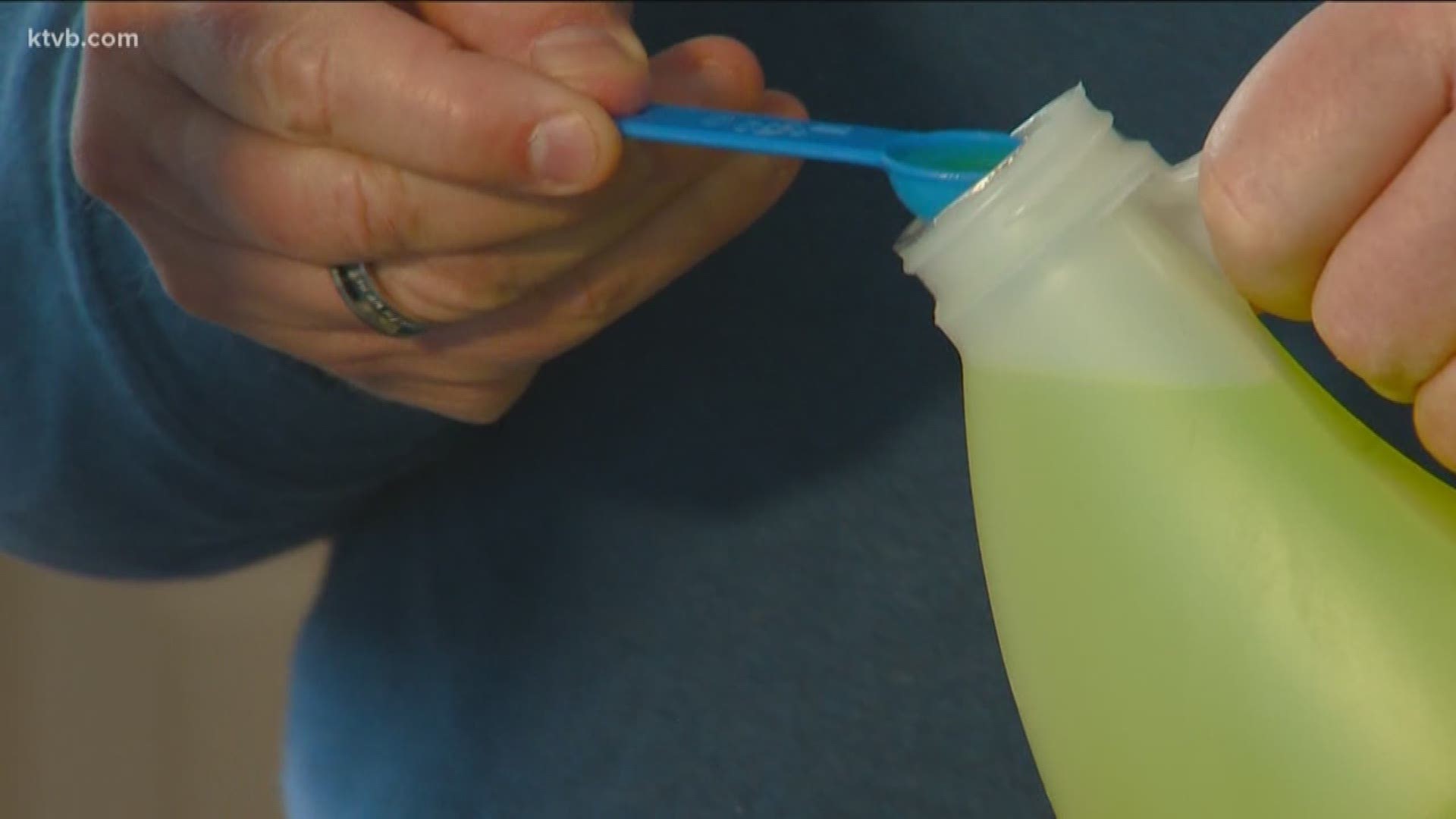BOISE, Idaho — If you’ve ever purchased plant food and fertilizer at the store, you know how expensive it can be. But did you know that you can make your own at home for a fraction of the price, using common household products?
Garden master Jim Duthie shows us how to save money and keep your plants healthy by making your own homemade plant food. And at the same time, you’ll be recycling some food waste that would otherwise just go down the drain.
Here’s a way to keep your houseplants and your garden lush and healthy without hurting your wallet with costly commercial plant foods and fertilizers. Not only will you save money, but you’ll also know what it’s made of.
Many common household products contain all of the nutrients that plants need to thrive.
For example, epsom salts contain magnesium and sulfur, both of which are important for plant growth. Sulfur helps plants absorb nutrients from the soil, and magnesium increases a plant’s ability to produce chlorophyll, which is what makes a plant green and healthy.
Baking soda promotes blooms in flowering plants and helps prevent fungal diseases, which is especially important for most houseplants, which often deal with over-watering and poor air circulation.
One more common household product is ammonia. It’s is an effective cleanser, but it’s also very high in nitrogen, so it can provide what a plant needs for healthy root growth and development.
Making a batch of nutritious homemade plant food is pretty easy. First, take an empty one-gallon jug, like a rinsed-out plastic milk jug, that you were probably going to throw out anyway.
Add one-and-a-half tablespoons of epsom salts, one-and-a-half teaspoons of baking soda, and a scant one-half teaspoon of household ammonia. Don’t add any more than that. with ammonia, a little goes a long way.
Fill the jug with plain tap water, put the lid back on, and swish it around to mix everything up. Then let it sit for about 30 minutes to make sure the epsom salts dissolve completely.
Label the container and store it in a cool, dry place away from children and pets.
It’s ready to use right from the jug. No need to dilute it. For houseplants, use one or two cups of this homemade liquid plant food about once a month in place of a normal watering. You can also use it in your outdoor flowerbeds and garden.
Here’s another idea. water your plants with leftover cooking water from boiling or steaming vegetables, eggs, potatoes, and even pasta. the water contains nutrients that will benefit the plants. Just be sure to cool the water first.
Eggshells are high in calcium, as well as nitrogen and potassium, key ingredients for plant health. I rinsed the shells out under running water to remove any egg residue, and then I microwaved them for about a minute to dehydrate them.
Now I can crush them into a powder by hand or in a blender, and then either sprinkle them around the plant, or mix them with some water for a liquid fertilizer.
Finally, we all know how healthy bananas are for people, but they’re good for your plants, too. They’re high in potassium, for healthy plant growth and resistance to pests and diseases.
Cut or chop the banana peels and let them soak in water for a few days out of the sunlight. Then use the banana peel water on your plants.
Or simply throw the peels into a blender with some water and puree them. Store this banana peel solution in a container and mix about one cup to a gallon of water, and then water your plants normally. It’s completely natural, and it hardly costs anything.
There you have it. Just a few easy and very inexpensive ways to feed your plants with healthy, nutritious fertilizer that you made yourself. You’ve saved money, and you saved adding more food waste to the landfill or down the drain. and you’re plants will love it.
And here’s one more idea. Next time you change out your tropical fish tank or fish bowl, set the water aside and use it to water your plants. Fish waste is high in nitrogen. And it doesn’t take any extra effort from you, since the fish did all the work. Just make sure it’s fresh water, though, and not salt water.
Watch more 'You Can Grow It':
See them all on our YouTube playlist here:

